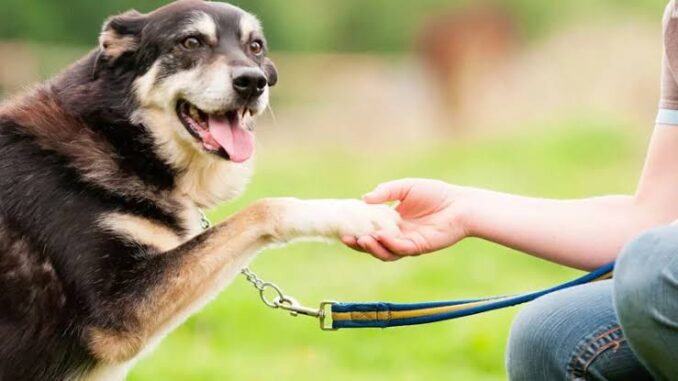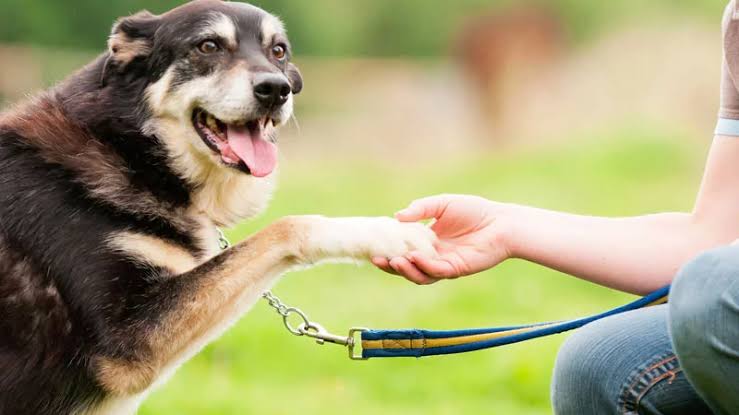
Ways to Keep Your Dog Mentally Sharp: Just like humans, dogs need more than physical exercise to stay healthy and happy they need mental stimulation too. A mentally sharp dog is not only more obedient and alert but also experiences fewer behavioral issues and shows signs of contentment. This is especially important as dogs age, since cognitive decline, much like dementia in humans, can affect their quality of life.

Whether you have a spirited puppy or a wise senior, keeping your dog mentally engaged should be part of your daily routine. In this guide, we’ll explore seven enriching, practical, and enjoyable ways to keep your dog’s mind in top condition no fancy equipment required.
7 Ways to Keep Your Dog Mentally Sharp
1. Interactive Toys and Puzzle Feeders
Mental enrichment begins with the most accessible tools: puzzle toys. These are designed to challenge your dog to think, problem-solve, and use their nose or paws to get treats or food.
Popular types include:
- Treat-dispensing balls that roll and release kibble as the dog plays.
- Slider puzzles that require moving levers or compartments.
- Snuffle mats that simulate natural foraging.
These toys slow down fast eaters and reward problem-solving. Start with beginner-level puzzles and increase difficulty as your dog improves. You can even DIY a toy using a muffin tin and tennis balls to hide treats.
Pro Tip: Rotate toys weekly so they feel new and exciting.
2. Obedience Training and Trick Teaching
Training isn’t just about good manners—it’s a brain workout. Learning commands and new tricks challenges your dog to focus, think, and retain new information.
Focus areas:
- Basic commands like sit, stay, and come
- Advanced tricks like rollover, spin, bow, or even ring a bell to go outside
- Impulse control exercises like “leave it” and “wait”
Short daily training sessions (5–15 minutes) are ideal. Use positive reinforcement—treats, praise, or play—to create a positive learning environment. As your dog masters one command, level up to keep them mentally engaged.
3. Nose Work and Scent Games
A dog’s sense of smell is its superpower—up to 100,000 times more sensitive than ours. Scent games tap into this natural talent, providing tremendous mental stimulation.
Ideas for nose work:
- Hide and seek with treats: Hide a few smelly treats around a room and let your dog find them.
- Find the object: Teach your dog the names of toys and have them find specific ones.
- Shell game: Hide a treat under one of three cups and shuffle them around.
You can also enroll in formal nose work classes, which mimic professional scent detection and tracking. These games encourage focus, independence, and build confidence—especially for shy or anxious dogs.
4. Change the Routine and Explore New Environments
Just like humans, dogs benefit from novelty. A change in scenery, sounds, and smells stimulates their brain and enhances memory.
Try these ideas:
- New walking routes: Explore different parks, neighborhoods, or trails.
- Urban enrichment: Bring your dog on safe errands where they can watch people and take in new smells.
- Off-leash exploration: In safe areas or dog parks, let your dog lead the walk.
Let your dog sniff during walks—it’s how they read the world. A 20-minute “sniff walk” can be more enriching than a brisk hour-long jog with no sniffing.
5. Social Interaction and Playtime
Dogs are social creatures. Interaction with humans and other animals is mentally stimulating and emotionally fulfilling.
Social opportunities include:
- Dog playdates: Supervised sessions with familiar canine friends.
- Group training classes: Mental challenge plus socialization.
- Doggy daycare: Ideal for friendly dogs needing stimulation while owners work.
Games like tug-of-war, fetch with rules (like sit before chase), or playing “find the toy” with you also keep your dog alert and engaged. Be present and animated—your enthusiasm boosts their excitement and learning.
6. Food Enrichment and Mealtime Games
Instead of handing your dog a full bowl of food, use mealtime as a training or puzzle opportunity.
Food enrichment ideas:
- Scatter feeding: Toss kibble on the lawn or rug for your dog to search.
- Stuffed toys: Fill a Kong with soft food or peanut butter and freeze it.
- Hand feeding: Incorporate training into meals by feeding piece by piece after commands.
Food becomes a reward, a challenge, and an engaging experience. It activates both their mind and foraging instincts, turning an everyday routine into enrichment.
READ ALSO: The Benefits of Trifexis for Pets: A Comprehensive Guide
7. Regular Vet Visits and Brain-Boosting Nutrition
Cognitive decline in dogs can begin as early as age seven, but with proper care, it can be slowed significantly.
Health-based mental sharpness tips:
- Vet checkups: Annual exams can detect early signs of cognitive dysfunction or hearing/vision loss that affect learning.
- Brain-supportive diet: Look for dog foods with omega-3 fatty acids, antioxidants, and MCTs (medium-chain triglycerides) to support brain health.
- Supplements: Consider veterinarian-approved supplements like SAM-e, DHA, or vitamins C and E to support mental function in aging dogs.
Maintaining physical health directly supports cognitive function. An active body makes for an active mind.
FAQs
How do I know if my dog is bored or mentally understimulated?
Signs of mental boredom include:
- Destructive chewing or digging
- Excessive barking or whining
- Restlessness or pacing
- Inattention or “zoning out”
Providing more mental challenges and structure can improve these behaviors.
Can old dogs still learn new tricks?
Absolutely. While it might take more repetition, older dogs are fully capable of learning new commands and behaviors. In fact, continued learning can slow or even reverse signs of cognitive decline.
How much mental stimulation does a dog need daily?
It depends on your dog’s age, breed, and temperament. Most dogs benefit from 30–60 minutes of combined mental activities daily. High-energy or working breeds may need even more.
Are some dog breeds naturally more intelligent or easier to train?
Yes. Breeds like Border Collies, Poodles, and German Shepherds are known for their intelligence and trainability. However, all dogs benefit from mental stimulation regardless of breed.
Can overstimulation be a problem?
Yes. Too much excitement or complexity without breaks can overwhelm dogs. Watch for signs like avoidance, stress yawns, or frustration. Keep sessions short, positive, and fun.
Are mobile apps or dog tech toys helpful for mental enrichment?
Yes, interactive tech toys and even scent-detection robots can offer variety. However, nothing replaces the enrichment of real-world play and interaction with you.
How can I help a blind or deaf dog stay mentally stimulated?
Use alternative cues:
- Blind dogs: Rely on consistent verbal commands and scent trails.
- Deaf dogs: Use hand signals, vibrations, or flashing lights.
Tactile toys, scent games, and gentle training can provide fulfilling stimulation.
Leave a Reply
You must be logged in to post a comment.